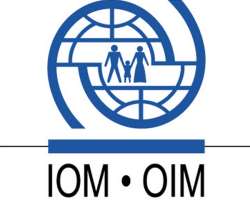Namibia Prepares to Manage Disaster Risk

GENEVA, Switzerland, May 24, 2013/African Press Organization (APO)/ -- IOM Namibia, in cooperation with the Office of the Prime Minister and with financial support from USAID's Office of Foreign Disaster Assistance, this week completed a training of trainers in disaster risk management in Ongwediwa.
The training will enhance national capacity for disaster risk management by increasing the country's resilience to the multiple natural disaster hazards.
Thirty-two officials from key government ministries, regional and town councils, and the Namibian Red Cross Society took part. Next week, a second training is scheduled for the remaining seven regions of the country.
The training included key disaster risk management concepts and principles; the institutional framework for disaster risk management in Namibia; Namibia's hazard profile; and community participation in risk management, among others. The participants will become certified disaster risk management trainers qualified to teach others.
The training coincides with the recent drought disaster declaration by President Hifikepunye Pohamba, who underlined the severity of the situation and called for coordination among all stakeholders.
It forms part of a broader regional capacity building programme for sustainable and coherent disaster risk management, which includes the neighbouring countries of Botswana and Mozambique and is founded on the principles of national ownership, partnership, participation and a low-cost methodology.
The Namibian capacity-building model, formulated in 2011 in the aftermath of devastating floods which caused wide spread displacement, has been replicated and adapted by other countries, including Colombia, Pakistan and currently Botswana and Mozambique.
Namibia is a country prone to annual natural disasters including floods, droughts and fires. Last year the Namibian government passed a Disaster Risk Management Act in an effort to institutionalize the legal framework for disaster risk management.
